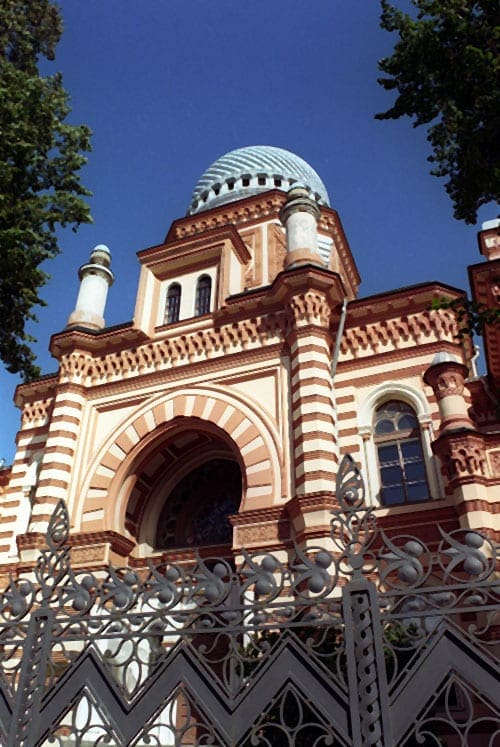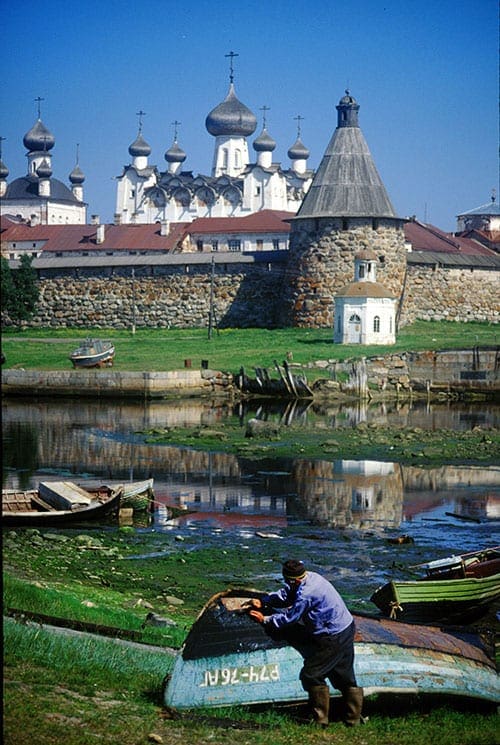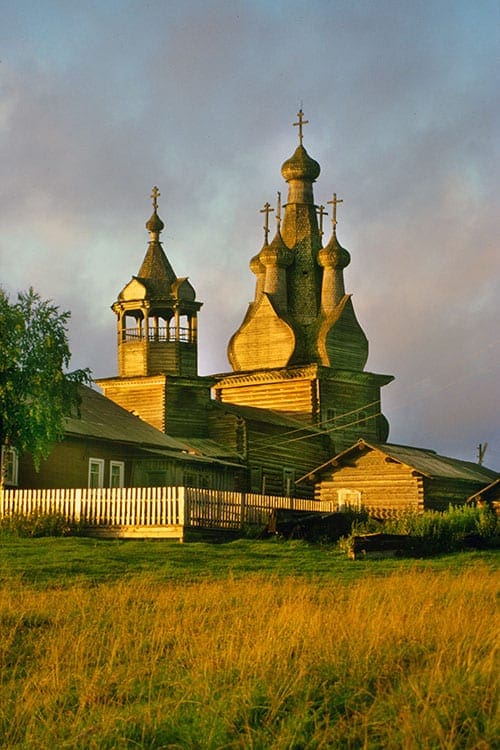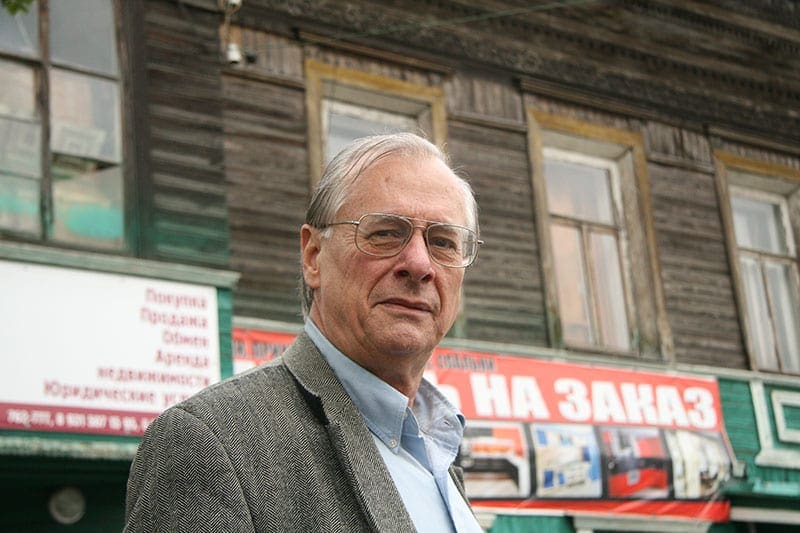
Photo by Alexey Kolosov of William Brumfield in Vologda, Russia in 2011.
William Brumfield’s books on Russian architecture, including his groundbreaking survey, A History of Russian Architecture (Cambridge University Press, 1993), have won him considerable acclaim.
It is a body of work created over 50 years of research, and animated by an abiding love for Russian culture. That love has been reciprocated by Russian scholars and organizations; Brumfield is a member of the Russian Academy of Architecture and Construction Science and the Russian Academy of the Arts.
“In the course of my many years of working in Russia, there has been a response,” he says. “My thirst has been met with an understanding over there.”
Brumfield is a professor of Slavic Studies at Tulane University, where he took his bachelor’s degree in 1966. But his interest took wing in introductory courses in the Russian language he took when he matriculated at Hopkins in the early 1960s.
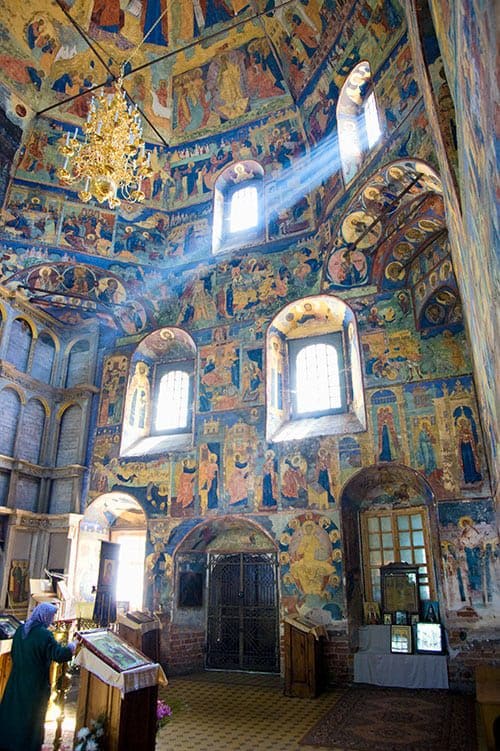
Church of John the Baptist in Vologda, Russia. [Photo: William Brumfield]
“I was searching for something,” he recalls. “I’d already begun reading Russian literature and I found some answers, or at least some thoughts, that resonated with my own quest.”
The first encounter was decisive. “There was who taught Russian [at Hopkins] at the time, and that was Norman Henley,” Brumfield recalls. “But that made all the difference, because I was ready to enter that space. Learning the language was critical.”
Brumfield’s photographs of Russia’s architecture are particularly valued by scholars and archivists around the world. His images not only illustrate his research, but also create a record of structures often under threat from the predations of nature and mankind. The photos reside in permanent collections in the National Gallery of Art and the Library of Congress in Washington D.C., and they have been exhibited in the State Museum of Architecture in Moscow.
Yet Brumfield is particularly proud of an online repository maintained by the Russian federal district of Volgoda that holds 36,000 of his images. “That is something that they created for my work,” he says. “It shows the importance of that field work I’ve done for their own heritage.”
A student of literature who took his doctorate at University of California, Berkeley, Brumfield’s bold decision to weave photography into his burgeoning interest in Russian architecture came when he was an assistant professor at Harvard University in the 1970s.
“I was a tutor at Leverett House,” he recalls, “and there was a dark room nobody was using.”
Brumfield says his new path meant that “I was no longer going to specialize in literature. I was going out into another dimension of Russian culture.” In less than a decade, he published his first book on the subject—Gold In Azure: One Thousand Years Of Russian Architecture (Godine, 1983)—with a title that taken from a work by Russian symbolist poet Andrei Bely.
His journeys in Russia have taken him to many of the nation’s vast corners. “The immensity of the space is just beyond belief,” he says. “It’s something we don’t understand.”
Traversing those distances in winter can be challenging. Even risky. A trip in 2000 to see a historic church in the northern Russian town of Kimzha led to a faceoff between his driver’s vehicle and a truck loaded with fuel on a narrow “winter road” of packed ice over tree stumps.
“They found a place a few meters back where it was a little bit wider,” Brumfield recalls. A delicate operation commenced. “It was a matter of fraction of centimeters between us. We crawled forward in increments, and it took almost an hour to get past. But we made it.”
Brumfield’s attraction to Russia’s northern reaches is the focus of his most recent book, Architecture at the End of the Earth (Duke University Press, 2015). The region boasts many of the nation’s iconic and beloved wooden churches, which Brumfield describes as “beacons within the forest.”
Yet Brumfield says the landscape holds a great complexity. “It’s also a tragic area, because of the Gulag era,” he says. “The concentration camps that were dotted throughout the North. The forest camps. That’s something I allude to in the book. There are shadows in that world.”
While he acknowledges the challenges presented by the fractious political environment of this moment, he says that almost 50 years working in the Soviet Union and its successor states provides useful perspective on the long-term trajectory of the U.S./Russia relationship.
“The whole thing has become a miasma,” he observes. “But I’ve been there through very difficult times. In the late 1970s and early 1980s, during the Afghanistan period in their history, or during the tense moments after the shooting down of the Korean airliner [in 1983]. All of these things that resonated during the Cold War.”
Brumfield says the warm reception of his work by scholars in Russia demonstrates the power of cultural exchanges to create mutual understanding “People of good will, and intelligent people,” he says, “are going to find a way to communicate.”

